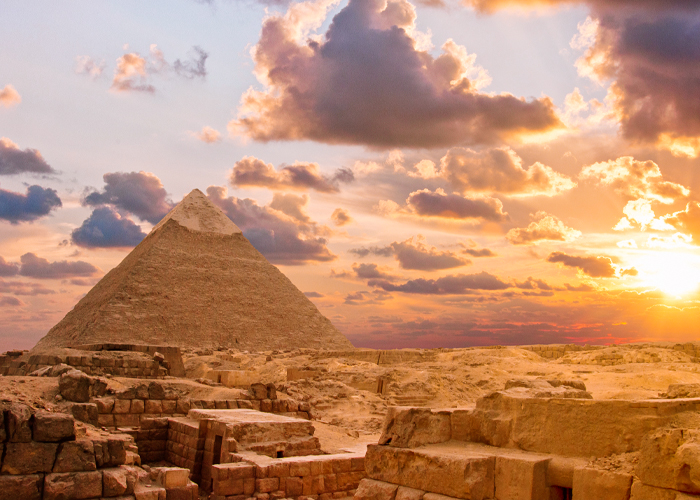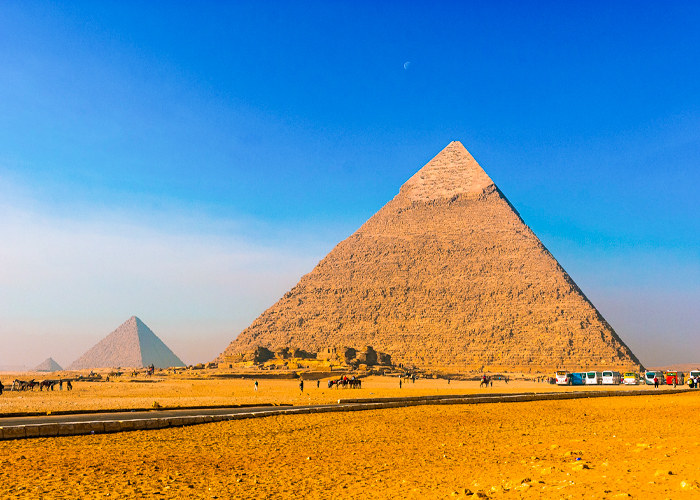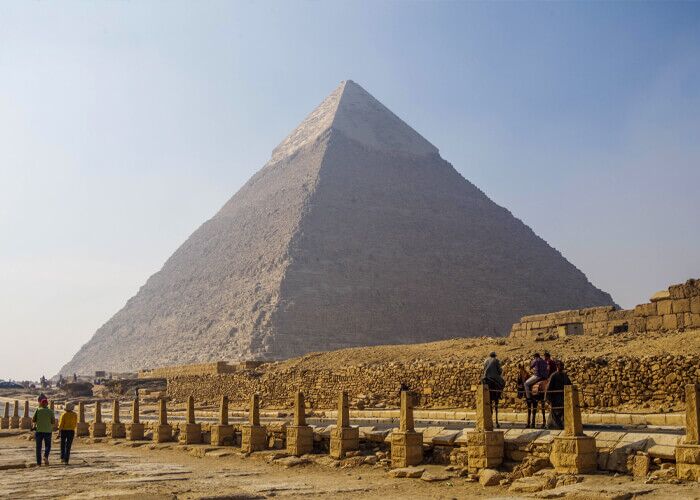Great Pyramid of Cheops: The Eternal Wonder of Ancient Engineering
Introduction
Great Pyramid of Cheops remains one of the most awe-inspiring structures ever built, a monument that has captivated travelers, explorers, and historians for centuries. Known also as the Pyramid of Khufu or the Cheops Pyramid, it is the largest and oldest of the Three Pyramids of Giza, and the only surviving member of the Seven Wonders of the Ancient World. Towering against the desert sky, the Great Pyramid continues to intrigue visitors with its sheer scale, mysterious construction, and fascinating chambers hidden deep inside. Whether you call it the Keops Pyramid, Pyramid of Cheops, or Khufu’s Pyramid, its majesty makes it an unmissable stop for anyone traveling to Egypt.
History and Purpose of the Great Pyramid
The Great Pyramid of Cheops was built during the Fourth Dynasty, around 2580–2560 BCE, under the reign of Pharaoh Khufu, known in Greek as King Cheops. It was constructed as his royal tomb, designed to ensure his safe journey to the afterlife. Unlike ordinary tombs, the Pyramid Cheops symbolized the pharaoh’s divine power and connection to the gods.
Historical records, including writings from Herodotus, describe the incredible effort required to build this monument. Tens of thousands of laborers, not slaves as once believed, worked for decades to complete it. The project required precise planning, engineering brilliance, and an immense commitment of resources. For ancient Egyptians, the pyramid was not just a burial site—it was a sacred link between earth and heaven.
The Pyramid of Cheops facts tell us that its orientation to the cardinal points is nearly perfect, showing the advanced astronomical knowledge of the builders. This alignment may have symbolized the pharaoh’s eternal journey with the sun god Ra. Over the centuries, the pyramid has endured earthquakes, looting, and erosion, yet it still stands as a powerful testament to Egypt’s golden age.

Architectural Mastery of the Pyramid
The architecture of the Cheops Pyramid continues to astonish experts. With an original Cheops Pyramid height of about 146.6 meters (481 feet), it was the tallest man-made structure in the world for over 3,800 years. Today, due to erosion and the loss of its smooth limestone casing, the height of the Great Pyramid stands at around 138.8 meters. The Khufu Pyramid height remains an unmatched feat of precision for its time.
The base covers 13 acres, with each side measuring about 230 meters. One of the most fascinating Cheops Pyramid facts is the level of precision in its construction—the sides differ in length by only a few centimeters. Estimates suggest that how many blocks are in the Great Pyramid reaches over 2.3 million stone blocks, each weighing between 2.5 to 15 tons. Altogether, how much does the Great Pyramid weigh is thought to be around 6.5 million tons.
The pyramid’s geometry reveals advanced mathematical knowledge. Ratios between its height and base suggest an understanding of π (pi) and the golden ratio, long before these concepts were formally defined. For travelers, standing at its base and gazing upward is an unforgettable reminder of human ingenuity and ambition.
Exploring the Inside of the Cheops Pyramid
Venturing into the Cheops Pyramid inside is like stepping back in time. While the pyramid looks solid from the outside, its interior hides a network of chambers and passageways that continue to puzzle researchers. The most famous room is the Great Pyramid King’s Chamber, located at the heart of the monument. Constructed entirely from massive granite blocks, the King’s Chamber Giza houses the remnants of a red granite sarcophagus believed to have once held Khufu’s body.
Above it lies a series of relieving chambers designed to distribute the immense weight of the pyramid’s stones, showcasing the builders’ genius. Another key feature is the Queen’s Chamber Giza, though its purpose remains debated. Some believe it was intended for Khufu’s consort, while others think it served as a symbolic chamber for the pharaoh’s ka (spirit).
The narrow passageways, including the Grand Gallery, give visitors a sense of the monumental effort required to create this structure. Walking inside the pyramids King’s Chamber is a surreal experience, allowing travelers to physically connect with a space built over 4,500 years ago. Even today, new explorations using advanced technology like muon scans continue to reveal hidden voids and mysteries within.

Mysteries and Theories Around the Pyramid
The Pyramid of Cheops is not only an architectural wonder but also a source of endless mystery. How did ancient Egyptians move and place millions of massive blocks with such precision? Theories range from straight and circular ramps to more complex systems of levers and counterweights. Despite decades of study, the exact method remains one of history’s great puzzles.
There are also numerous Pyramid of Cheops facts linked to astronomical alignments. The shafts leading from the King’s Chamber point to specific stars, including Orion and Sirius, reinforcing the belief that the pyramid symbolized a cosmic journey. Some alternative theories even suggest lost technologies or external influences, though mainstream archaeology attributes the pyramid to the brilliance of human engineering.
Legends about hidden treasures or secret chambers persist. In 2017, scientists discovered a large hidden void above the Grand Gallery using cosmic-ray technology, reigniting debates about what still lies undiscovered. For travelers, these ongoing mysteries add an irresistible layer of intrigue to visiting the Keops Pyramid.
Visiting the Great Pyramid Today
Travelers from all over the world are drawn to the Great Pyramid of Cheops, eager to experience its grandeur firsthand. Located on the Giza Plateau just outside Cairo, the pyramid is part of the famous Giza complex that also includes the pyramids of Khafre and Menkaure, as well as the Sphinx. Tickets allow visitors to explore the pyramid from outside, while separate passes are required to go inside the Cheops Pyramid.
Guided tours often include detailed explanations about the pyramid’s history, construction, and significance. Standing before the Cheops Pyramid height in person leaves a lasting impression that no book or photograph can capture. For many, the most memorable moment is climbing through the narrow passageways to reach the Great Pyramid King’s Chamber.
The site also offers panoramic views of Cairo and the surrounding desert. For an even richer experience, combining a visit to the pyramid with the nearby Grand Egyptian Museum provides travelers with context through the display of artifacts once connected to Khufu’s reign. As one of the most famous attractions in the world, the Great Pyramid is not just a monument—it is a life-changing experience.
Legacy and Influence of the Cheops Pyramid
The Cheops Pyramid has influenced architecture, culture, and imagination across millennia. As the only surviving Wonder of the Ancient World, it represents humanity’s drive to achieve the impossible. The precision, scale, and endurance of the The Cheops Pyramid continue to inspire modern architects, engineers, and dreamers.
From ancient travelers who marveled at its scale to modern tourists capturing photos against its backdrop, the pyramid is a universal symbol of endurance. Its connection to the mysteries of life, death, and the cosmos ensures that it remains relevant to every generation. Scholars continue to analyze Cheops Pyramid facts, while writers and filmmakers use it as inspiration for stories that blend history with legend.
For Egypt, the Pyramid Keops is more than just a tourist attraction—it is a source of national pride and identity. Travelers leave not just with photographs but with a sense of wonder, respect, and connection to one of humanity’s greatest achievements.

